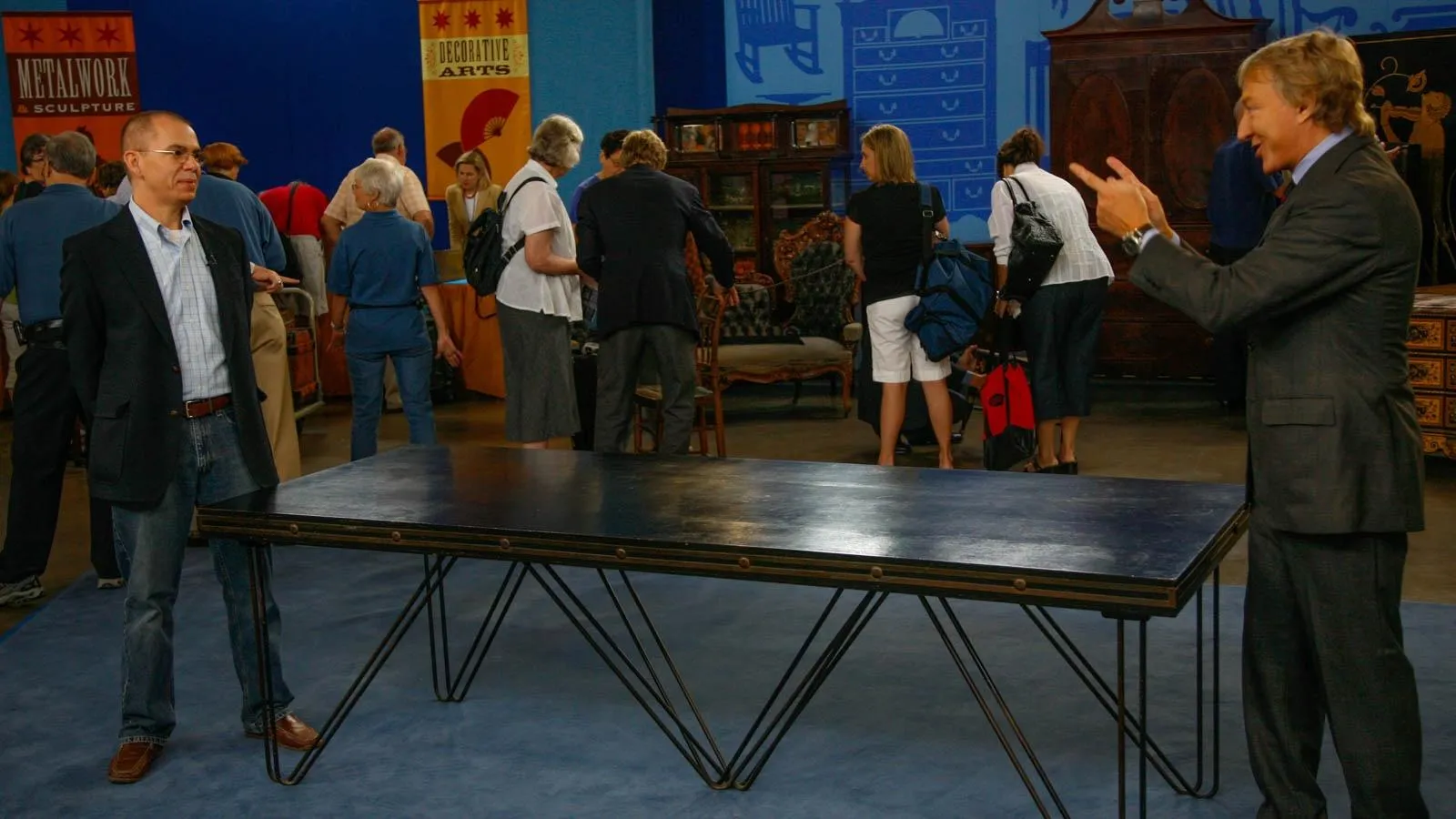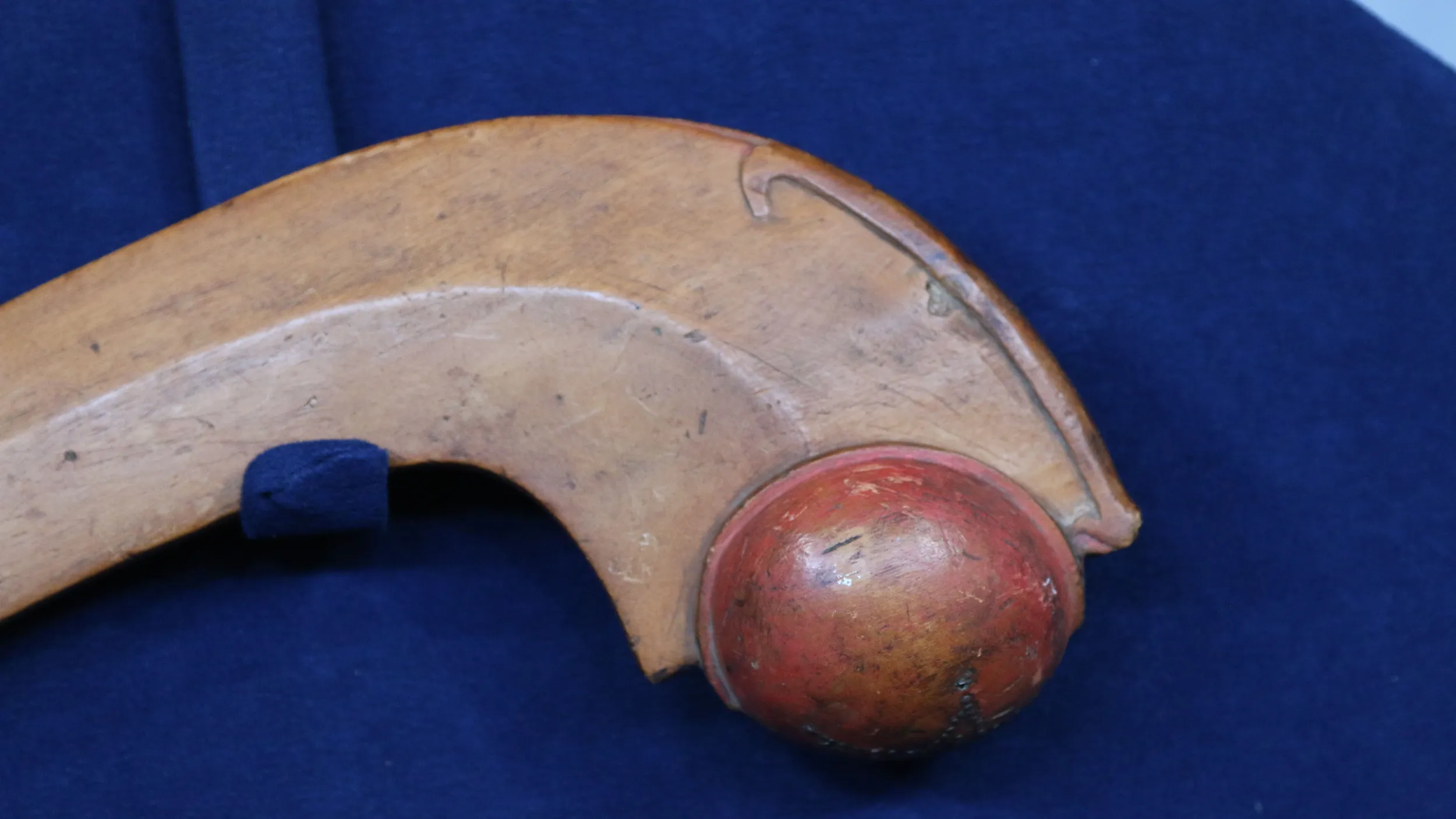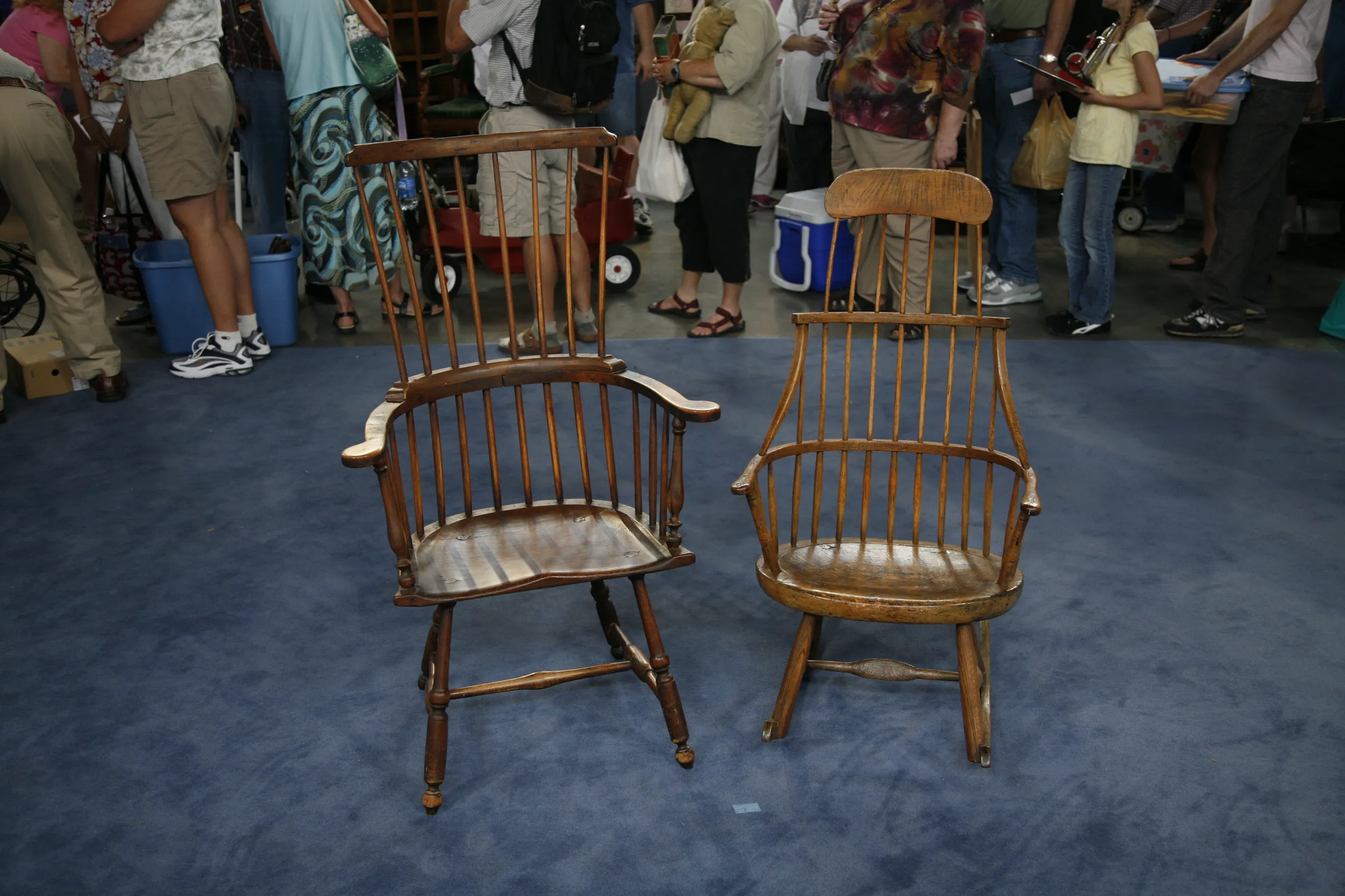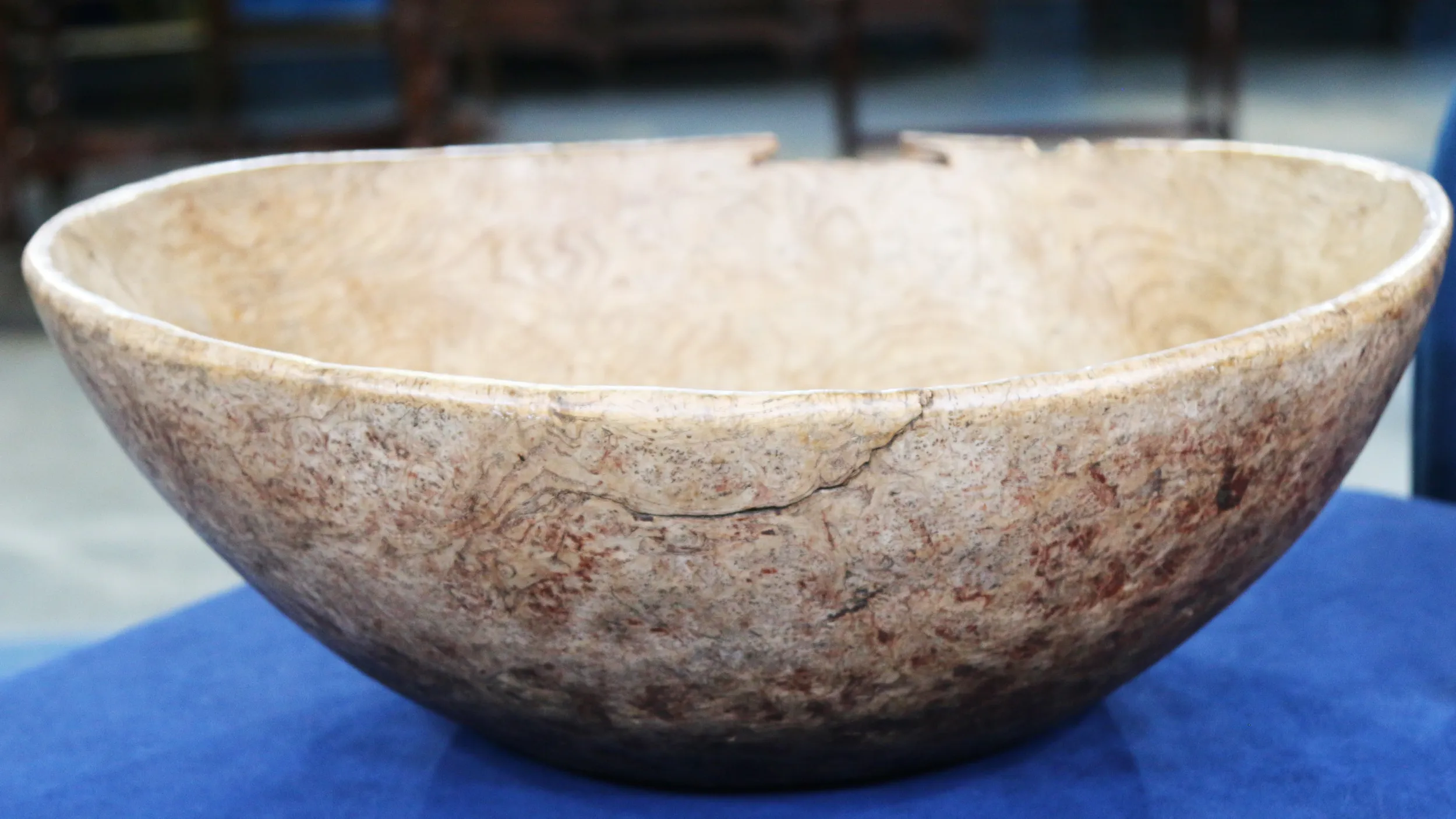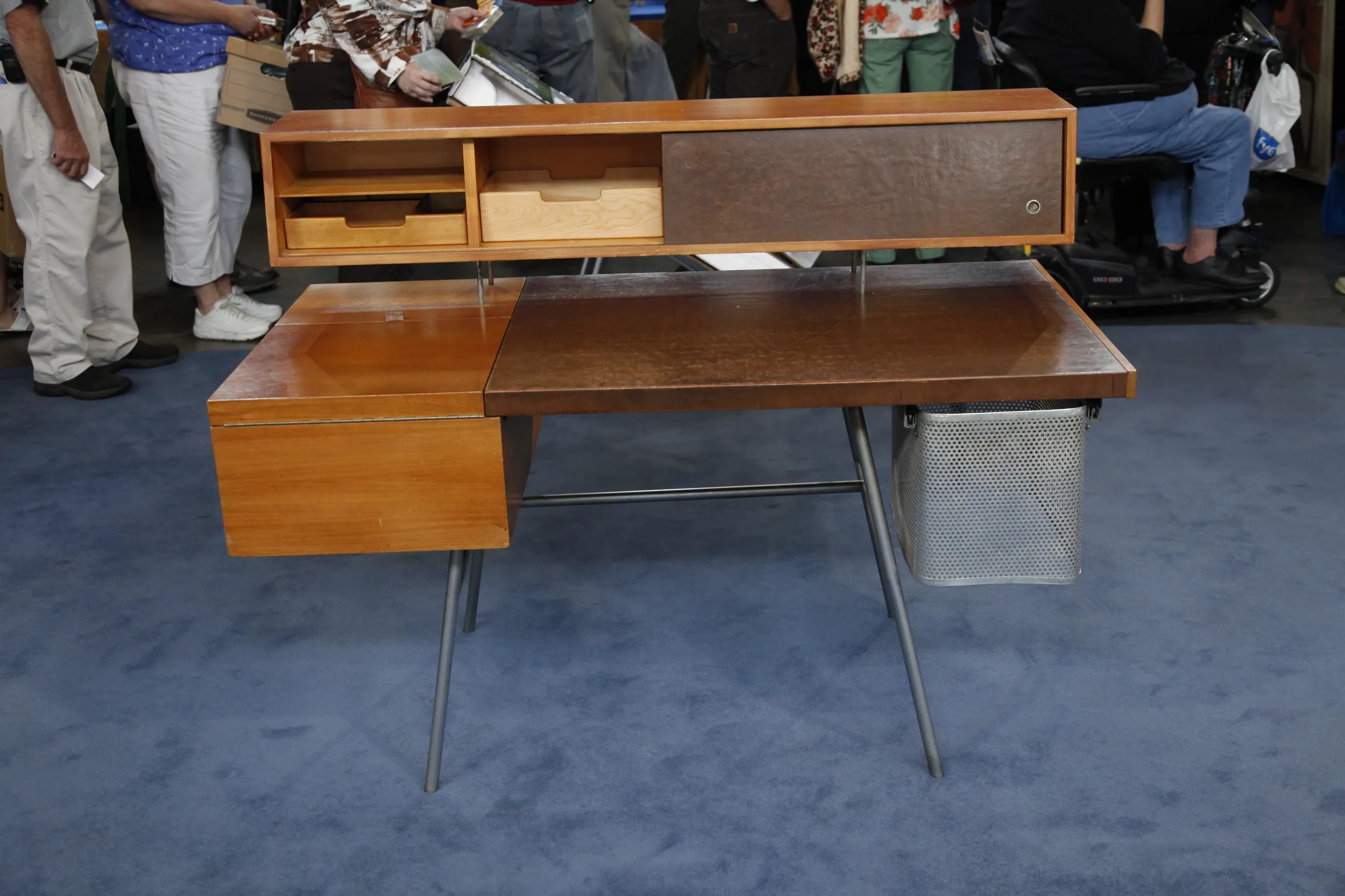GUEST: This came from my grandmother's home, upstate New York. The home was built back in the early 1800s, sometime between 1800 and 1820, on a Revolutionary War grant, a land grant. This came from the home. I really-- we always called it the "bread bowl."
APPRAISER: Well, in the business, we would refer to this as a "burl bowl."
GUEST: Burl bowl? Oh.
APPRAISER: A burl is on the side of a tree and it looks sorta like a wart, or a knot.
GUEST: Oh, yes, mm-hmm.
APPRAISER: And so, the guy that made this had to have a burl about that big...
GUEST: Oh, my.
APPRAISER: ...cut it off the tree...
GUEST: Mm-hmm.
APPRAISER: ...and then make a bowl out of it. And the thing about a burl is that it's very, very hard wood. And as you can see from looking inside of here, that the grain is all swirly...
GUEST: Mm-hmm, mm-hmm.
APPRAISER: Well, the reason they made it out of burl was because it, it would stay stable more so than a straight grain would.
GUEST: Mm-hmm.
APPRAISER: Because all that grain was intermingled. The time period fits perfect with what you're saying-- 1815 or '20.
GUEST: Oh, my.
APPRAISER: I looked for lots of wear on the inside. You can see where they used tools on it and they put dough in it-- they just used it. That's what you want to see. Now, the other thing about this one is that it was turned on a lathe. If you look real closely, you can see the rings underneath here, and if you run your hand over it... Can you feel how uneven that is?
GUEST: Oh, oh, my, yeah. I never noticed that.
APPRAISER: The other thing that is great about it is that it has an oval shape. When it was made, it was perfectly round.
GUEST: Oh.
APPRAISER: But over the years, it expands and contracts, and it'll contract one way against the grain more so than another, so what was perfectly round becomes oval.
GUEST: Mm-hmm.
APPRAISER: I showed this to a couple of the other guys and we think it's made out of ash. You hear us talk about surface on the show all the time.
GUEST: Uh-huh.
APPRAISER: For some things, it's not as critical as others, but in a burl bowl, that's very important. It has a nice old surface. Now, where do you have this in the house?
GUEST: Well, it was sitting on top of our big old TV, holding, uh, DVDs and videotapes.
APPRAISER: (laughs) Really?
GUEST: Yes.
APPRAISER: You got a big, wide spot on top of the television?
GUEST: Yes, and I think... Yes, I still have one of those old TVs. (laughs)
APPRAISER: Would you put less DVDs in it if I told you that, in a retail setting, this bowl's worth $6,000?
GUEST: Oh, my-- oh, my. (laughing): Oh, my. I don't know what I'll put in it now. (both laugh)
APPRAISER: You might want to at least put it somewhere where you won't knock it off on the floor.
GUEST: (chuckling): That's right.

